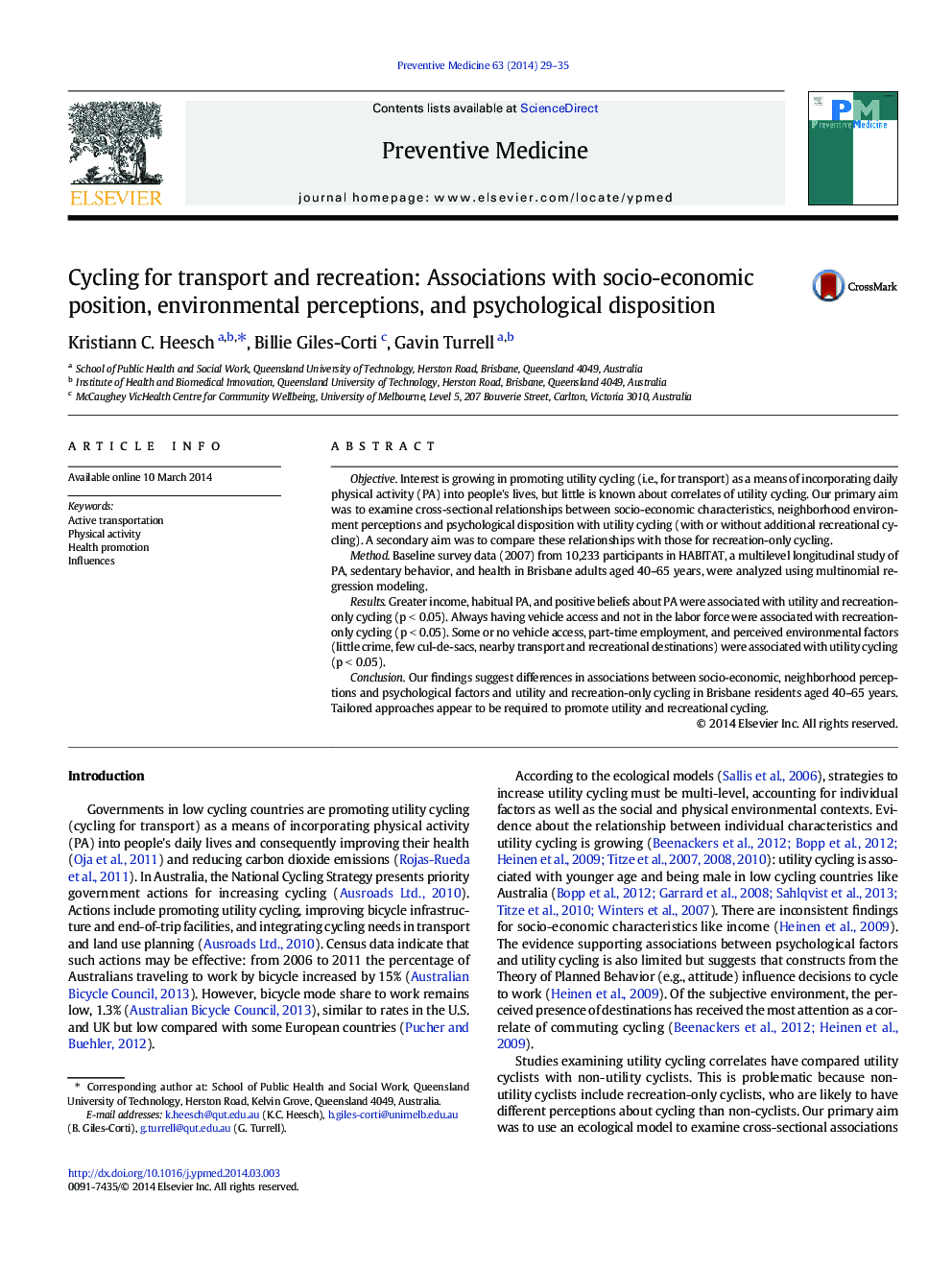| کد مقاله | کد نشریه | سال انتشار | مقاله انگلیسی | نسخه تمام متن |
|---|---|---|---|---|
| 3100532 | 1581651 | 2014 | 7 صفحه PDF | دانلود رایگان |
• 3.8% of participants, aged 40–65 years, cycled for utility in the previous week.
• Utility and recreation-only cycling correlates differed.
• Socioeconomic factors correlated differently and psychological factors similarly.
• Neighborhood environment perceptions correlated only with utility cycling.
• Tailored approaches are required to encourage utility versus recreational cycling.
ObjectiveInterest is growing in promoting utility cycling (i.e., for transport) as a means of incorporating daily physical activity (PA) into people's lives, but little is known about correlates of utility cycling. Our primary aim was to examine cross-sectional relationships between socio-economic characteristics, neighborhood environment perceptions and psychological disposition with utility cycling (with or without additional recreational cycling). A secondary aim was to compare these relationships with those for recreation-only cycling.MethodBaseline survey data (2007) from 10,233 participants in HABITAT, a multilevel longitudinal study of PA, sedentary behavior, and health in Brisbane adults aged 40–65 years, were analyzed using multinomial regression modeling.ResultsGreater income, habitual PA, and positive beliefs about PA were associated with utility and recreation-only cycling (p < 0.05). Always having vehicle access and not in the labor force were associated with recreation-only cycling (p < 0.05). Some or no vehicle access, part-time employment, and perceived environmental factors (little crime, few cul-de-sacs, nearby transport and recreational destinations) were associated with utility cycling (p < 0.05).ConclusionOur findings suggest differences in associations between socio-economic, neighborhood perceptions and psychological factors and utility and recreation-only cycling in Brisbane residents aged 40–65 years. Tailored approaches appear to be required to promote utility and recreational cycling.
Journal: Preventive Medicine - Volume 63, June 2014, Pages 29–35
